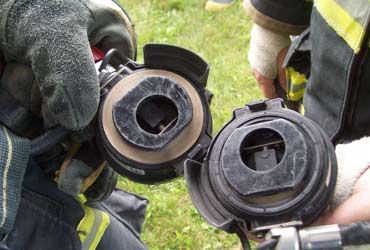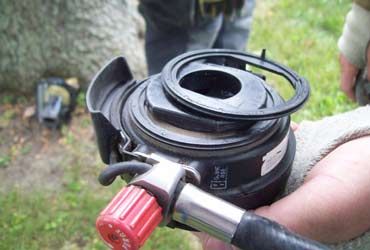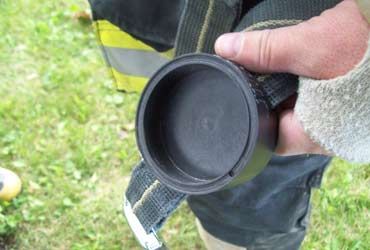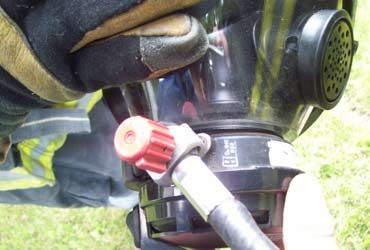Whenever we arrive at a working fire, time is running against us in terms of executing an interior attack and achieving a quick and effective knockdown of the fire.
Certain delays caused by human, mechanical or unknown error can arise, which handicap the efforts of our interior fire attack.
Some of these handicaps are attributed to our personal protective equipment malfunctioning right at the time of our operation.
A basic part of our personal protective equipment is the self contained breathing apparatus. This piece of equipment is an integral part of our personal protection as it provides for protection against heat, smoke, toxic gases and other products of combustion from entering into our respiratory system.
Knowing SCBA inside and out is vital to the survivability of the individual using it. Knowing the limitations, the mechanical operation and being able to troubleshoot problems as they arise will benefit the user and remove any handicaps.
During a firefighter survival training event that I was teaching at, two SCBAs malfunctioned, with the regulator not being able to dock properly with the face piece. We went on to hear that the same type of problem was also attributed to delays in mounting an aggressive interior attack at a few structural fires for a few fire departments.
The malfunction was that the regulator picked up a spare part from the SCBA waist belt and prevented proper docking into the face piece.
The domino effect for any firefighter is the progressive problem of the equipment malfunctioning, and not being able to recover from the initial problem.
In the photo below, we can see two regulators side by side showing the malfunction. The regulator on the left is showing a tan colored gasket, which makes the connection to the face piece air tight.
 |
The regulator on the right is showing a black ring on top of the tan colored gasket, which prevented the firefighter from making the connection.
The photos below were taken at a training exercise in which two other firefighters experienced the exact same thing: they were not able to make the connection to the face piece.
 |
 |
In the first photo above, I’ve showed the two black rings on top of each other on the one regulator to illustrate the thickness of the rings and how easily it is to miss this handicap. The rings come from the cup holder of the SCBA, as shown on the photo on the right.
The ring allows the regulator to sit in the holder as it duplicates the opening of the face piece, which makes it easy for the ring to stick to the regulator when removing it from the holder. There is a prong on the ring that allows it to seat properly in the cup holder. In the second photo, one ring has the prong and the other ring does not.
In the photo below, you can see regulator trying to connect with the face piece. The ring stuck to the regulator adds a gap between the two objects, thereby not allowing the regulator to connect properly into the face piece opening.
 |
This handicap will expose the firefighter to the environment that we are trying to prevent exposure from.
When certain parts of our SCBA equipment are not working properly, we need to recover quickly by troubleshooting the problem. A realization of the problem should warrant an immediate withdrawal from the IDLH area and declaring a Mayday.
Trying to solve the problem when previous attempts have failed while still located in the danger zone will only add to the domino effect.


